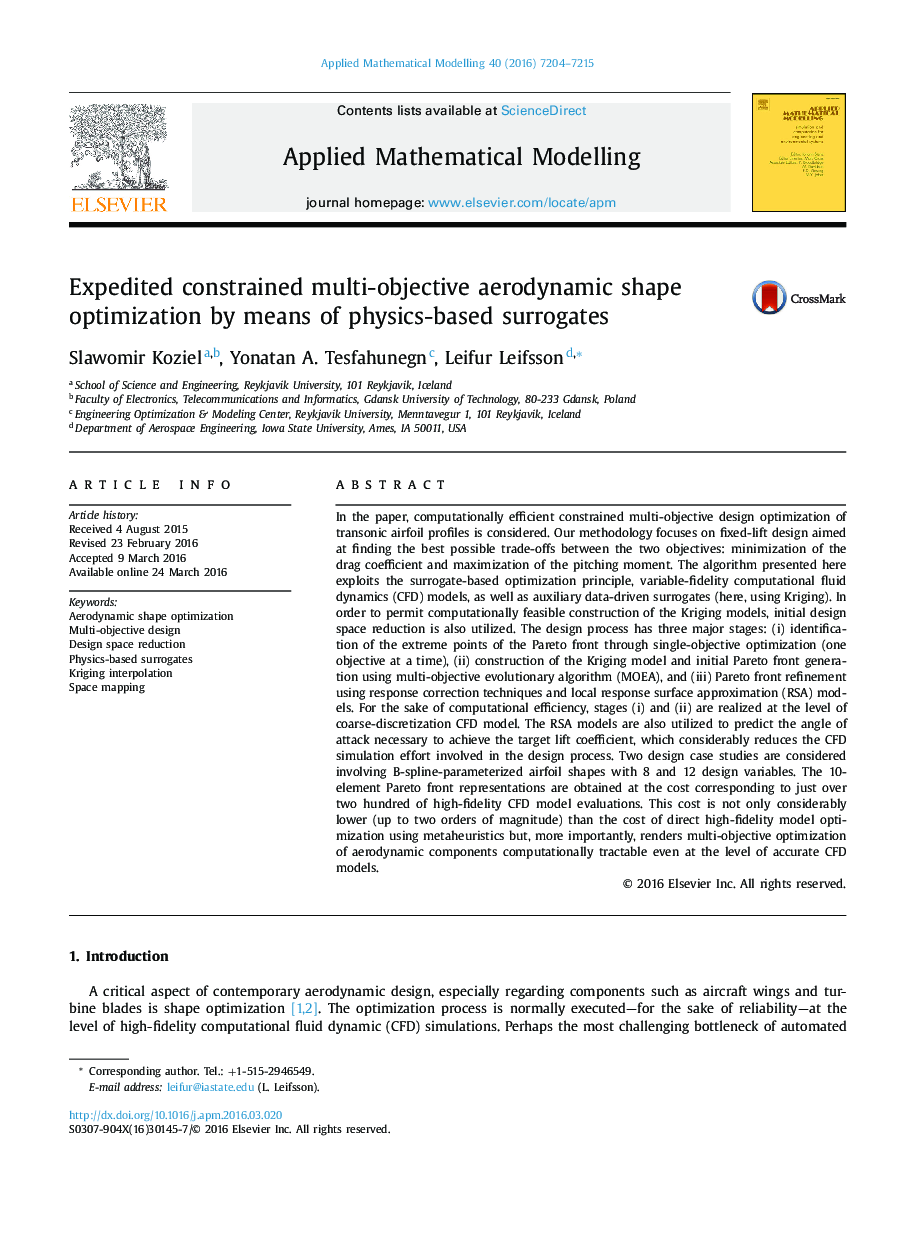| Article ID | Journal | Published Year | Pages | File Type |
|---|---|---|---|---|
| 1702824 | Applied Mathematical Modelling | 2016 | 12 Pages |
•Constrained multi-objective aerodynamic shape optimization algorithm is proposed.•SBO principle is exploited with variable-fidelity CFD models, and RSA surrogates.•The design space dimension is reduced through single-objective optimization.•The Pareto front is generated using a multi-objective evolutionary algorithm.•Transonic airfoil design cases demonstrate that few CFD model calls are required.
In the paper, computationally efficient constrained multi-objective design optimization of transonic airfoil profiles is considered. Our methodology focuses on fixed-lift design aimed at finding the best possible trade-offs between the two objectives: minimization of the drag coefficient and maximization of the pitching moment. The algorithm presented here exploits the surrogate-based optimization principle, variable-fidelity computational fluid dynamics (CFD) models, as well as auxiliary data-driven surrogates (here, using Kriging). In order to permit computationally feasible construction of the Kriging models, initial design space reduction is also utilized. The design process has three major stages: (i) identification of the extreme points of the Pareto front through single-objective optimization (one objective at a time), (ii) construction of the Kriging model and initial Pareto front generation using multi-objective evolutionary algorithm (MOEA), and (iii) Pareto front refinement using response correction techniques and local response surface approximation (RSA) models. For the sake of computational efficiency, stages (i) and (ii) are realized at the level of coarse-discretization CFD model. The RSA models are also utilized to predict the angle of attack necessary to achieve the target lift coefficient, which considerably reduces the CFD simulation effort involved in the design process. Two design case studies are considered involving B-spline-parameterized airfoil shapes with 8 and 12 design variables. The 10-element Pareto front representations are obtained at the cost corresponding to just over two hundred of high-fidelity CFD model evaluations. This cost is not only considerably lower (up to two orders of magnitude) than the cost of direct high-fidelity model optimization using metaheuristics but, more importantly, renders multi-objective optimization of aerodynamic components computationally tractable even at the level of accurate CFD models.
